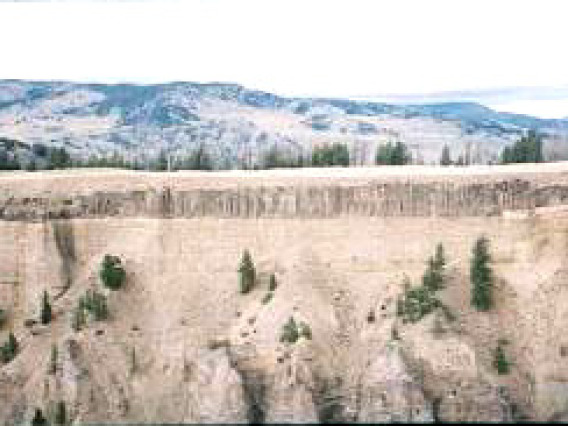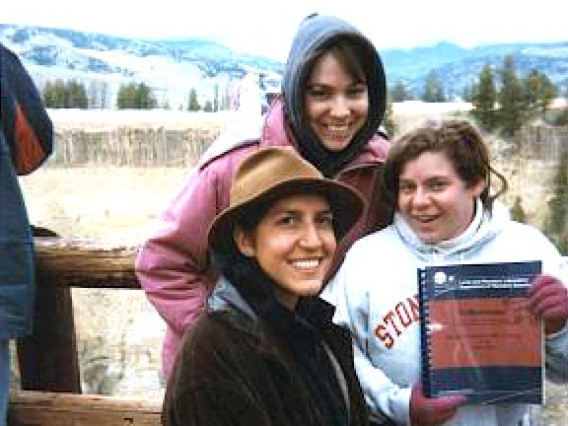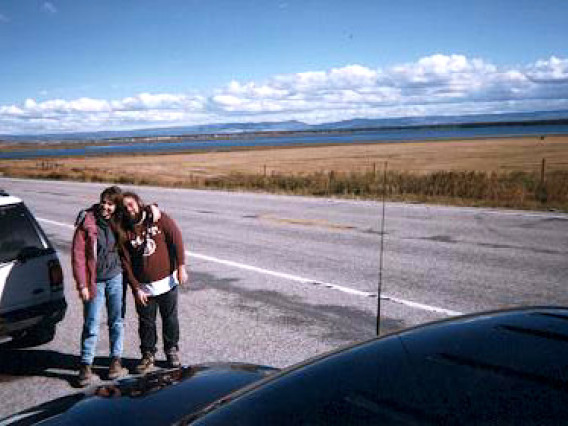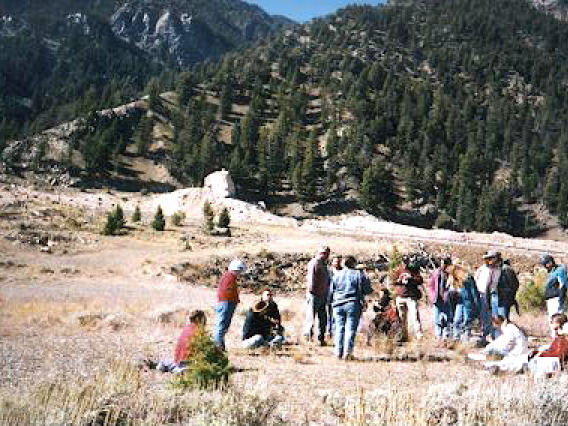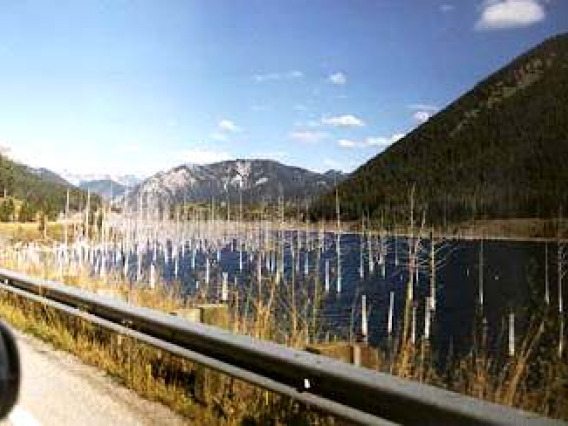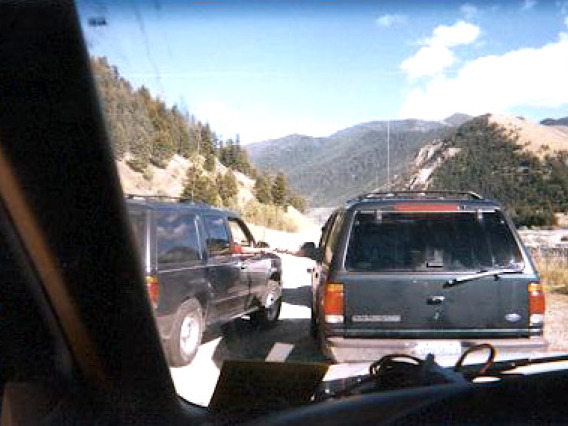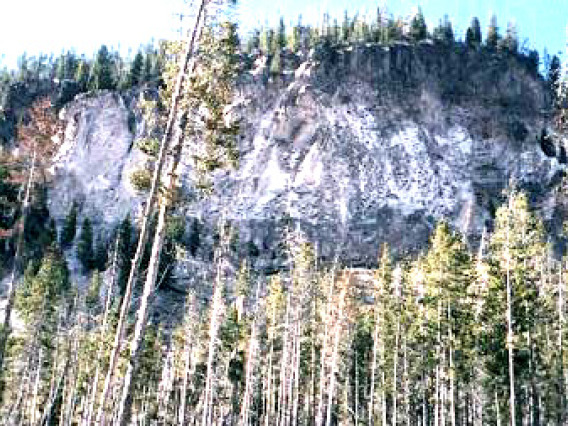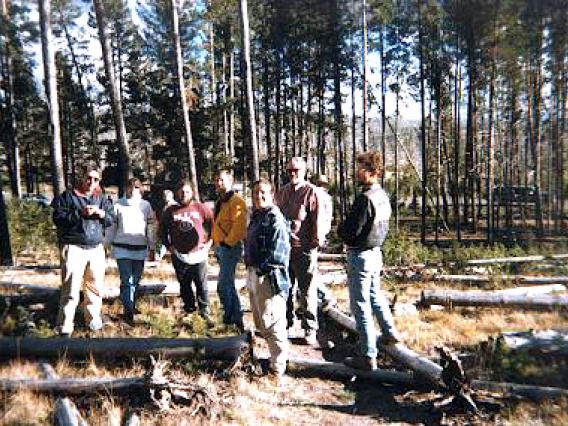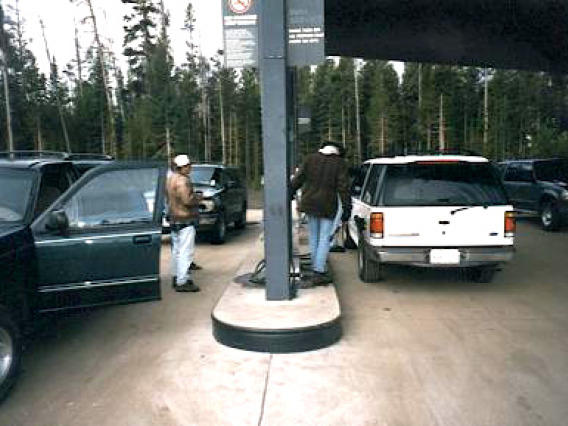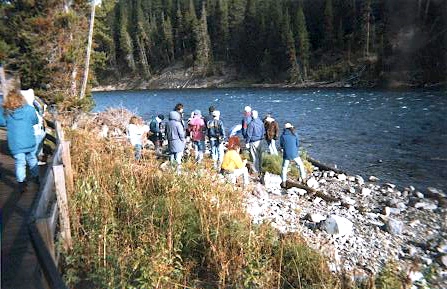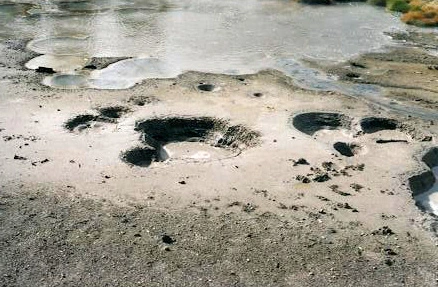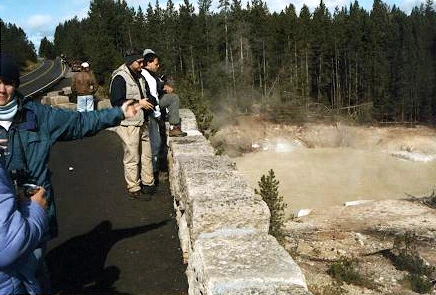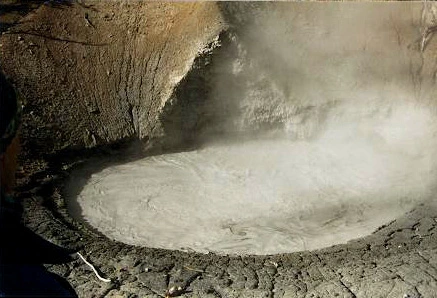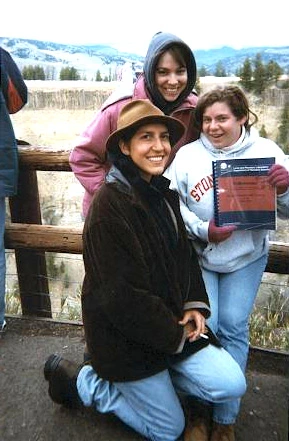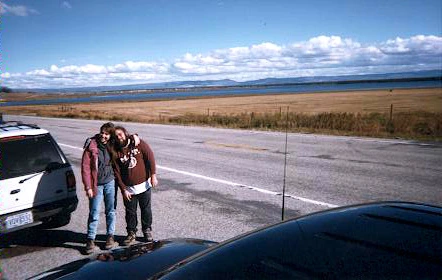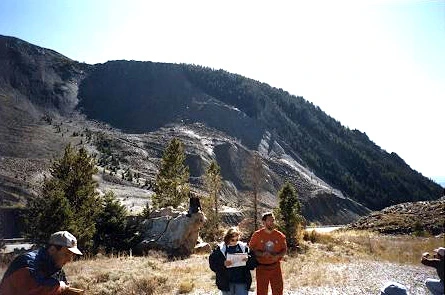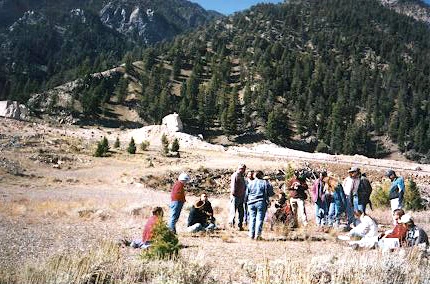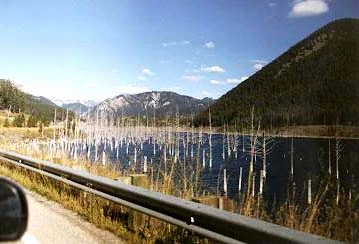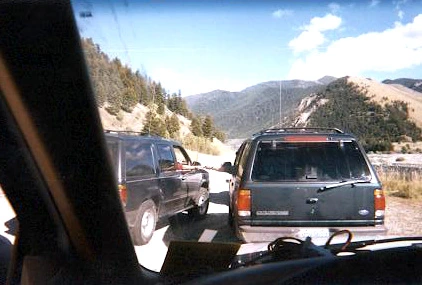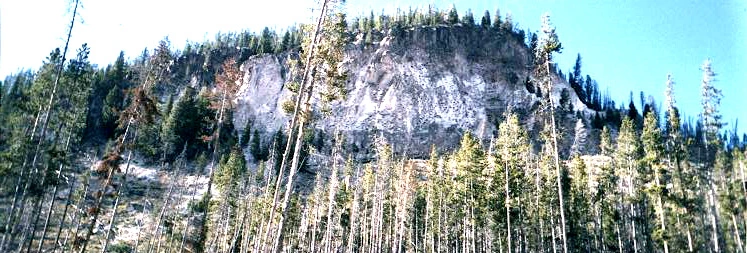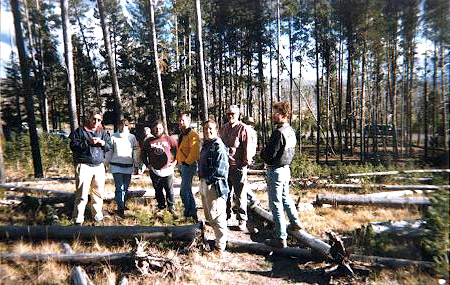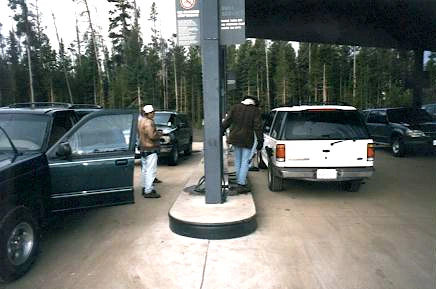Northwestern YNP and the Madison Canyon Landslide
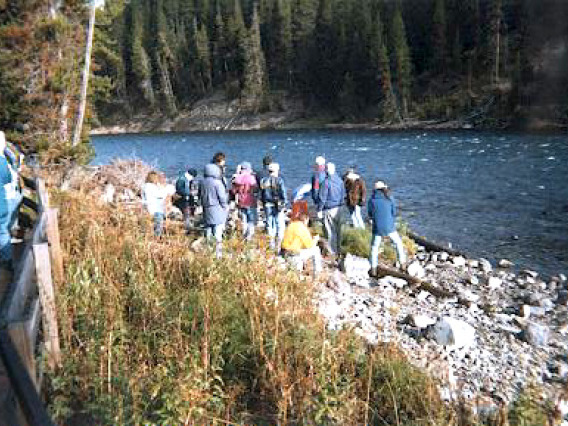
Friday we woke up a little more rested. It was partly cloudy and not too cold. Our first stop was at LeHavre rapids, where the resurgent dome uplift of the Yellowstone caldera is causing rough water in the streambed. Here, Vladimir tries to teach the physics of uplift at 8:30 a.m.
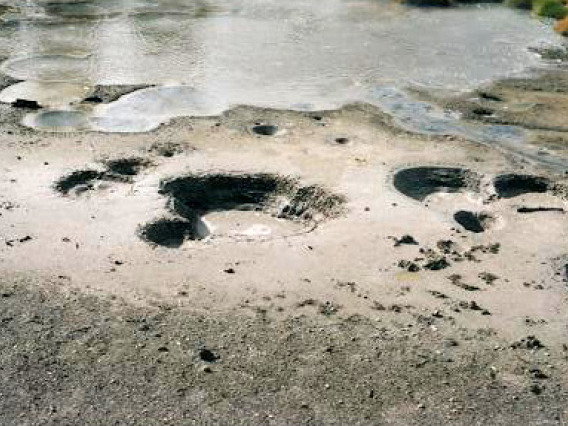
Next on the itinerary was our first look at hydrothermal features in the Sulfur Cauldron area. Most of these are acid pools, usually bubbling with escaping gases. None of them are geysers, but there are some neat things to see. These are small springs, some under a large pool of water.
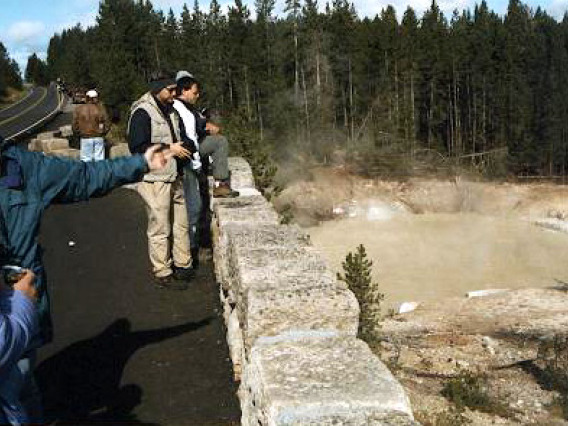
Overlooking Sulfur Cauldron, which is an enormous spring, roiling, loud, and definitely sulfurous in color and smell.

Mud Volcano, an acid spring which is vapor-dominated, that is, it doesn't discharge a lot of water. As such, mud builds up in the pool instead of being drained off. At Mud Volcano, the mud has been splashed around the pool and built up a spatter cone.

The farthest destination today was the Madison Canyon Landslide, precipitated in 1957 by the Hebgen Lake earthquake (M=6.3). The rock walls lining a river valley were shaken loose and slid down into the river and up the other side of the valley, in the process burying a campground. The landslide scar.


